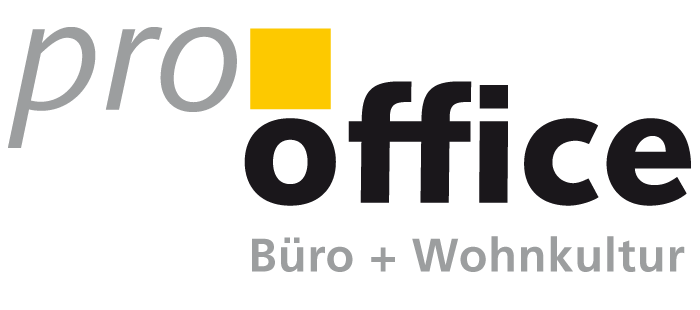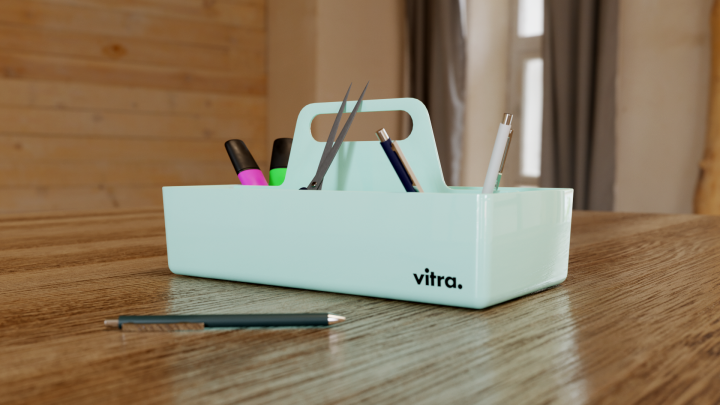5 tips for office organisation
Documents, meetings, appointments and deadlines. A lot of things come together in the office and they need to be organised. But organising in the office is not that easy when you have to organise your desk, your documents, your mails and last but not least yourself. With one or two tips, however, you can create order well and in the long term. At work, of course, you don't want to be tidying and organising all the time. Therefore, it helps to create a tidiness system from the outset that can be easily maintained and makes a positive contribution in the long term.
1. A tidy workplace is the be-all and end-all
Tidiness is half the battle and it starts at the desk. The desk is the place where you spend the most time while working in the office. Keeping it tidy and clean is particularly important. An organised and attractive workplace has a positive effect on workflow, concentration and efficiency. The desk should therefore be kept as empty as possible. Anything that is superfluous, clutter or bulky should not be placed here. Items that are used frequently also need a fixed place that is ideally well chosen. Pen holders or pencil cases are ideal for pens so that they don't lie around everywhere. Documents and notes that need to be used frequently can be organised well in a filing system. This way, documents do not lie on the table, but are organised in the filing system. Alternatively, these items can be stored in a drawer under the worktop or on the side of the desk, so they don't have to lie on the table. Keeping your desk tidy and clean should become a routine to maintain order in the long term. If you find it hard to stay tidy, there are a few tricks you can use to improve it. Set up a clutter-free zone on your desk by using as large a desk mat as possible. Only frequently used devices such as a mouse, laptop, keyboard or smartphone should be on this mat. Everything else must not be placed on the table mat. This way you create a "clutter-free zone" on the table. 2.
2. Materials need a fixed place
In the office, you need a lot of space for your documents and materials. To create enough space for everything, you need enough storage space in the form of furniture, baskets and shelves. Mobile pedestals offer plenty of space for all kinds of documents and office materials. Things like hole punches, staplers and tacks can be easily stored in small baskets or on a shelf. The mobile pedestal also offers space for such small items. In addition to notes, the drawers can also be used to store small items that do not have to be left open on the desk all the time. Small inserts in the drawers prevent these things from getting lost or mixed up. In this way, you can organise various bits and pieces well and keep them hidden away. For larger items, baskets are a good storage option. They look neat and from specifically hide the items. For organising folders, hanging folders and the holders designed for them are a good choice. Suspension files are easy to sort alphabetically and search quickly. They look neat and prevent document chaos. Shelves or filing cabinets are suitable for storing folders. With the right labelling on the folders, you can also see at a glance what is stapled in which folders. Pens can be stored in pen holders on the desk or in a pencil case in a drawer. If the pens are not used often, it is better to keep them in a drawer and keep the desk free of them.
Elementary is constant tidying and organising. Each item must have its own place and always be put back there at the end of the working day. Even during the day, things that are no longer used or needed should be put away. With this tactic, you can keep your office tidy in the long run.
3. Organise documents properly
Document chaos is a hindrance to work, prolongs processes and makes things more difficult. Documents can be organised in various ways. For individual pieces of paper, filing cabinets are sufficient so that they do not lie loose and can be easily removed. Various documents can be stored and filed in suspension files or binders. Labels and other methods can be used to organise and categorise these documents. For better organisation, the suspension files can be selected in different colours and then assigned a theme. This gives you a quick overview of which folder contains which information and documents. The same trick can be applied to file folders. To organise your documents well, it is advisable to set up a system of organisation. Folders and folders should always be labelled with their approximate contents and the time period. To be able to find everything again quickly, it is worthwhile to create a table of contents. This does not have to be extensive with page numbers. Separators within the folder are sufficient and help to find documents quickly. For a quick overview, coloured folders are suitable, which are assigned a theme accordingly. If you don't want to have your folders and files in every conceivable colour, but prefer something simpler, you can use small coloured stickers. In this way, you can keep the colour scheme minimalistic without losing order.
4 Digital organisation is also necessary
Office organisation is not only about the physical organisation of documents, files and the workplace. Today, more than ever, digital order is an important part of working life. Anyone who works a lot or mainly digitally needs good digital order to be able to work in a structured and organised way. Just like in the physical world, documents and co. can get lost and disappear into the vastness of the hard drive if they are poorly organised. Those who work with physical backup systems or digital cloud systems should record them regularly and secure their data. Backups and data security are important issues when working digitally. Files on the computer should be organised and sorted, just like real documents. Instead of creating files, folders are created on the PC, which should be named accordingly. Files should be saved directly into the folders, so they are easy to find again and do not disappear somewhere on the hard drive. Since files are always time-stamped, there is no need to enter them yourself. This is a great advantage of working digitally. Even if you forget to save a file in the right folder, it can be found again using the search function. Chaos also quickly arises in the mailbox. One mail after the other arrives and remains in the inbox indefinitely. This quickly creates a mess that at some point can no longer be kept track of. To prevent this in the long term and to organise the mails, they should be sorted directly into folders in the mailbox. This can be done manually, but it always takes time. Most mail programmes have a function that sorts the sender's mail addresses directly into the appropriate folders when they arrive. This saves time in the long run and organises the mails in the long run. Important mails can be marked accordingly, so you can find them again quickly. From time to time, you should take the time to delete old mails. For efficient work, it is worthwhile to create shortcuts. If you work a lot with certain websites and applications, you can create links on the browser start page or the bookmarks bar that will quickly take you to the corresponding website. Looking to the future, you should also think about gradually digitising your physical documents. With appropriate scanners, documents can be scanned and saved. This makes them easier to distribute and, with backup systems, they will not get lost.
5. Time management and communication
Organisation in the office cannot only be related to the physical environment and the sorting of documents. How you personally organise yourself in your daily work and how you communicate are crucial for a good flow. There are a variety of ways to organise yourself personally. A classic is the calendar. Appointments, deadlines and meetings should be entered here as soon as they are announced so that they are not forgotten. For a better overview, it is a good idea to mark the appointments in different colours depending on the topic or type of appointment. The choice of calendar is a matter of taste, but whether it is a notebook, wall calendar or digital calendar, one is better than none. However, digital calendars offer some advantages that analogue calendars do not. Digital calendars can be provided with exact location information, notes and links to digital meetings or documents. Especially practical - the reminder function. The calendar sends a reminder as a push message at a predefined time. Those who tend to forget appointments easily or quickly get lost in tasks thus have a good overview of when what is due and the possibility to prepare in good time thanks to the reminder. To-do lists are worthwhile for a good overview of one's tasks. It is best to organise your tasks in such a way that important or time-consuming tasks are at the top of the list so that you can complete them first. In the course of the day, you can then work through the to-do list without forgetting anything. If you have frequent meetings with clients, colleagues or employees, you can help yourself by taking notes. Notes are helpful in preparation so that you don't forget your talking points in the meeting and can address everything. For extensive meetings, it is worth taking notes to keep track of what was discussed and the information afterwards. As with everything, prioritising tasks and topics is important, as is properly estimating the time needed. Tasks that need to be done promptly and time-consuming tasks should be done first or at least prepared. The type of communication is also important. Mails should be written as clearly as possible, without the need for follow-up questions. Colleagues or co-workers who could also use the information should be put in CC so that they can be in the picture. When it comes to discussing topics and reaching agreements, it is important to consider whether it is better to do this by e-mail or in a meeting. A meeting is not necessary for every topic, and for other topics e-mail communication is not sufficient.



